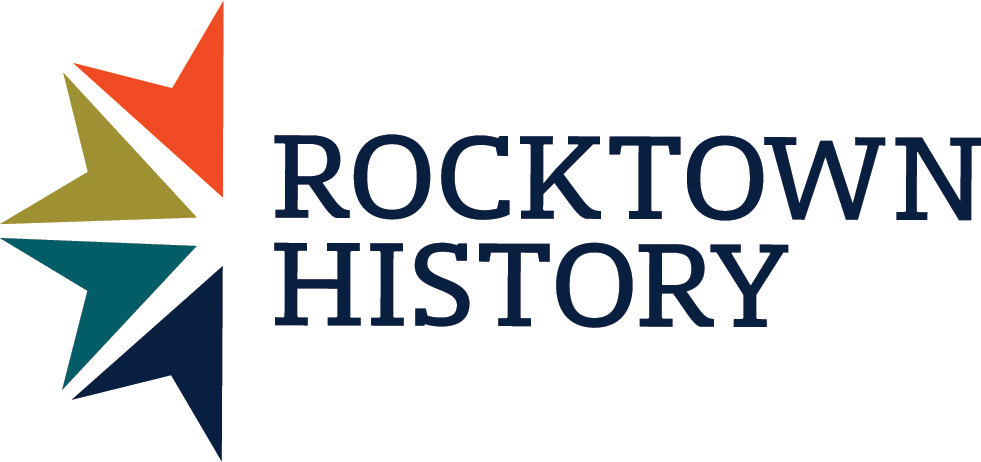Circus Days Part 2
Part 2: The Opposition Days
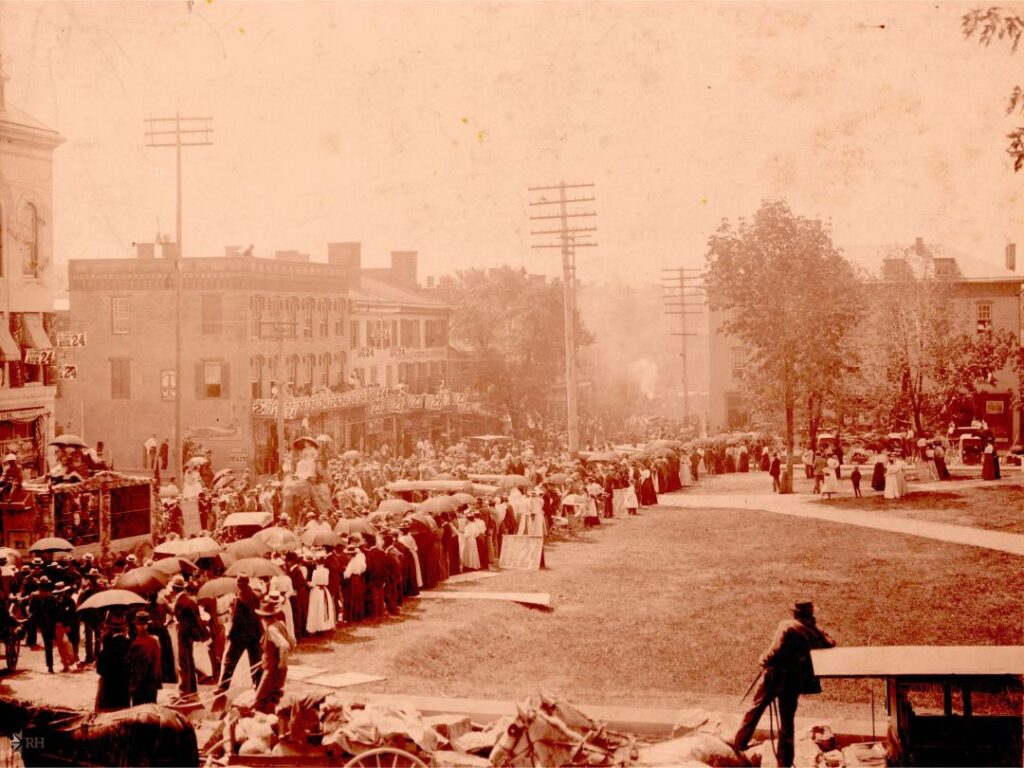
HRHS Photo0748
This photo takes us back to Harrisonburg’s court square as a circus parade traveled north on Main Street. Many signs clearly state AUG 24 as an important date. Zooming in, the date appears to announce Wallace Shows. Other signs show a larger 23. What is the story?
Searching for “Wallace Shows Harrisonburg” began a remarkable investigation of circus history which revealed the business of advertising and the rivalry of the circus circuit in the late 19th century. This article is Part 2 of a dive into the history surrounding those two days in August when the shows of two circuses came to town: Old John Robinson and The Great Wallace.
We pick up our story just as two rival circus shows—Old John Robinson and Great Wallace—are about to make their way into Harrisonburg each for “one day only.” On August 23rd, Robinson promised to deliver a reliable show that grandfathers and grandmothers in Virginia have proclaimed as their favorite—and that has grown “ten times the proportions in merit, size, and magnificence” since its last appearance. The Great Wallace Show aimed to outdo Robinson the very next day with their “highest class circus in the world.” Perhaps with the entertainment budgets of Shenandoah Valley residents in mind, the Wallace Show’s advertising beseeched audiences to “wait for the big shows.” If patrons would be patient for an extra day, Wallace promised the finest parade “ever put on the streets” and “a million dollar menagerie” (which would be valued at over $36M today).
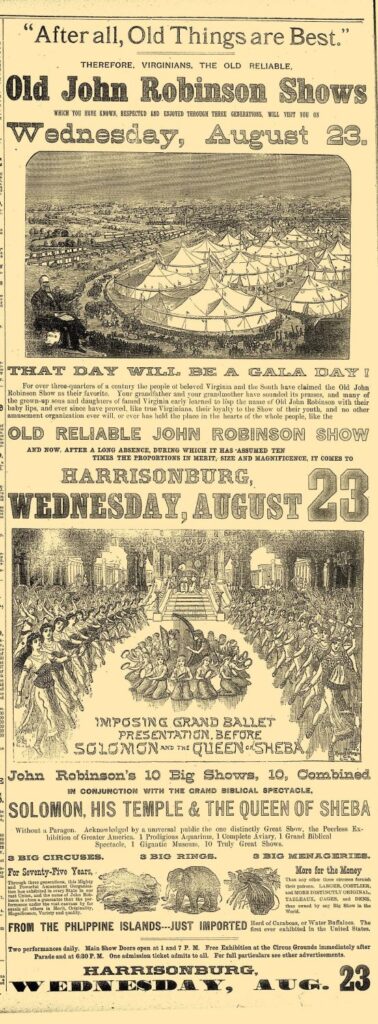
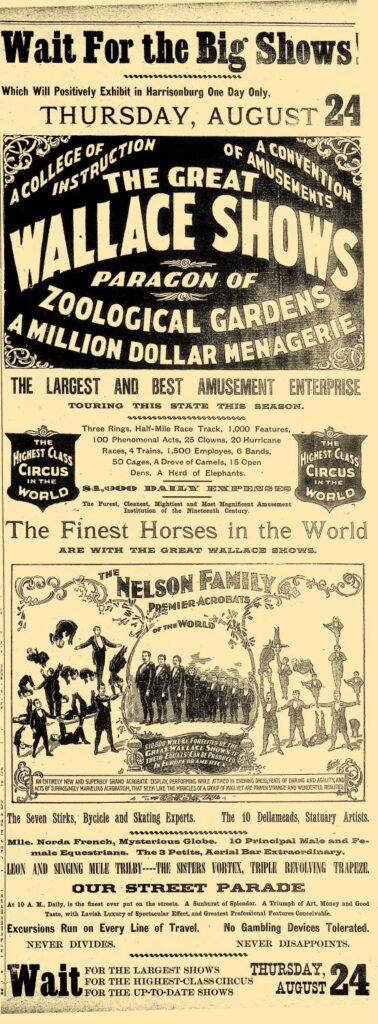
left: Rockingham Register, August 11, 1899; right: Rockingham Register, August 4, 1899.
The advertisements, bills, and commentary all stoked the smoldering rivalry between the two tent shows for weeks leading up to the main events. Flowery language and hard-hitting emotional appeals were hallmarks of both shows. Robinson’s camp leaned heavily into sentiment and tradition with sensational phrases like “. . . the grown up sons and daughters of famed Virginia early learned to lisp the name of Old John Robinson with their baby lips . . . and “. . . no other amusement organization ever will or ever has held the place in hearts of the whole people like the old reliable John Robinson Show.” Gosh.
For their part, Wallace positioned his show as modern, clean, and entirely high class, appealing to finer sensibilities with equally sensational phrases like “… entirely new and superbly grand . . .” and “. . . surpassingly marvelous acrobatism that seem like the miracles of a group of magi.” If “lavish luxury of spectacular effect” didn’t grab audiences, surely “the greatest professional features conceivable” would.
The high drama of Robinson v. Wallace had reached a fever pitch when the two converged in Harrisonburg in late August. John Robinson, who created his circus in 1824, was the more established proprietor having served more than three generations of spectators. He had been born in South Carolina and, perhaps advancing a budding cliche, ran away at age 15 to join a traveling wagon show. Thus began a career that included partnering with Barnum and the Ringling Bros. Ben Wallace, a businessman from Peru, Indiana, wouldn’t form his circus for another 60 years, but quickly built a reputation for excellence and established a name for himself in the tent-show world. His “high-class” productions ran from 1884 until Wallace sold to a corporation in 1913.

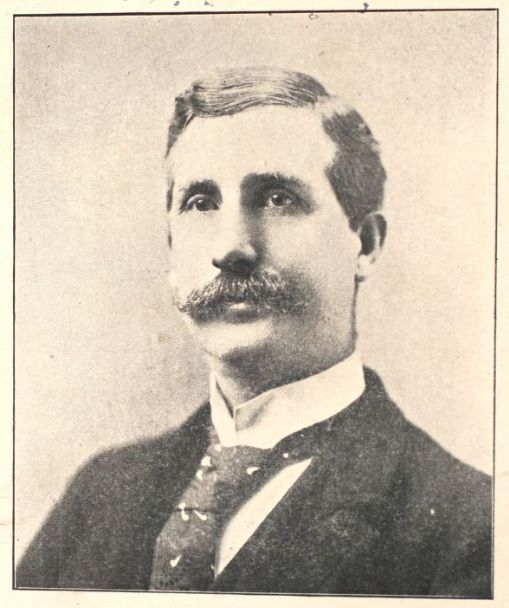
left: John Robinson; right: Ben Wallace
The newspaper called August 23, 1899, the “circus day of all circus days.” Reporting on the activity around the John Robinson show, the paper stated that curb space was in great demand for the parade and that the procession offered a new look. Instead of riding horses, the show folk rode in small carriages wearing citizen dress, and the show wagons eschewed the “monotonous and conventional” red and yellow of circus tradition and sported unique and colorful designs. Spectators rushed to the show grounds where nearly 8,700 watched the afternoon four-ring extravaganza, beginning with the King Solomon and Queen of Sheba spectacular. Robinson’s collection of rarest animals boasted new inhabitants: “odd and curious Water Buffaloes.”
A day later, one headline declared “NOT ALL OVER YET,” and another announced the Wallace parade as the “Grandest Display Ever Seen in Harrisonburg.” According to the report, the community was not prepared for a parade so large, imposing, and interesting from start to finish. In contrast to the trend of a curtailed procession, the Wallace Shows provided the eye-catching style that captures the attention of circus goers. The horses, especially, were a wonder—a fine compliment in a horse trading center! The Great Wallace Shows surpassed expectations. In spite of being smaller than Barnum & Bailey, its two rings and large stage offered excellent entertainment without the distractions of lesser talent in extra rings. The Nelson family, Wallace’s most prized attraction, was hailed as unrivaled by any similar acrobats on earth! Wallace’s evening audience reported to outnumber Robinson’s evening by a count of 2000.
Without a doubt, both the real and manufactured contest between Robinson and Wallace only added to the anticipation and fanfare surrounding the circus; “opposition days” proved to be an effective business strategy for both enterprises. But it’s hard to know or even judge, 125 years later, which show was superior in the eyes of those late-August crowds. If the citizens of Dayton are to be believed, though, this note may hold the answer:
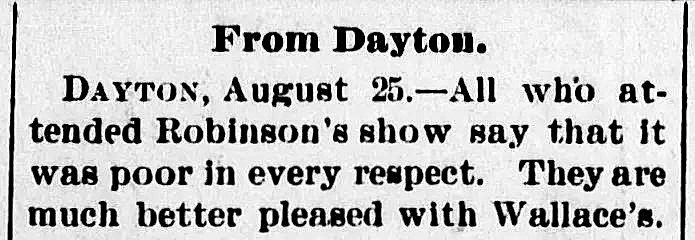
Harrisonburg Evening News, August, 25, 1899
